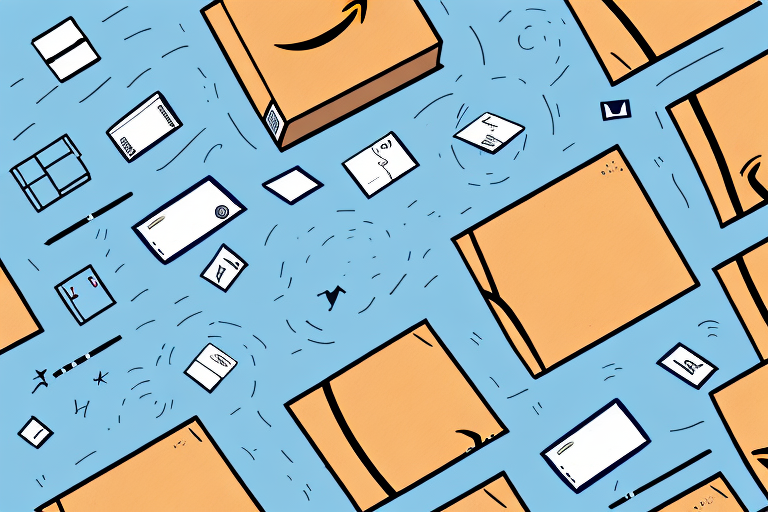Amazon is one of the biggest online retailers in the world, selling millions of products to customers every day. As such, it's inevitable that some of those products will be returned for various reasons. If you're a regular Amazon shopper, you might be wondering whether Amazon checks returned items before deciding whether or not to offer a refund. We're here to answer that question and many more.
The Amazon Return Policy: A Brief Overview
First, let's take a step back and look at the Amazon return policy more generally. According to Amazon's website, most items can be returned within 30 days of receipt for a full refund. However, some items may have a different return window or be ineligible for returns altogether, such as hazardous materials and customized products.
It's important to note that Amazon also offers free returns for many items, making the process even easier for customers. Additionally, Amazon has a feature called "Instant Refunds" which allows customers to receive their refund immediately upon initiating the return process, rather than waiting for the item to be returned and processed. This feature is available for certain items and can be a convenient option for those in need of a quick refund.
How Does Amazon Handle Returns?
If you decide to return an item to Amazon, you'll need to follow the instructions on the website to initiate the process. This typically involves printing a shipping label and packing slip, then sending the item back to Amazon. Once Amazon receives the returned item, it will usually take 2-3 days for your refund to be processed.
Amazon has a very customer-friendly return policy, which allows you to return most items within 30 days of delivery. However, there are some exceptions to this policy, such as items that are marked as "final sale" or "non-returnable."
When returning an item to Amazon, it's important to note that you may be responsible for the cost of return shipping, unless the item was defective or damaged. Additionally, if you received a damaged or defective item, you may be eligible for a replacement instead of a refund.
What Happens to Returned Items on Amazon?
Now we come to the heart of the matter: what happens to returned items on Amazon? In short, the answer is that it depends. Amazon has different processes for different types of items, so we'll break it down by category.
For electronics, Amazon has a strict policy of not reselling returned items as new. Instead, they are thoroughly inspected and tested to ensure they are in working condition. If they pass the inspection, they are repackaged and sold as "Amazon Renewed" products at a discounted price. If they fail the inspection, they are either sent back to the manufacturer for repair or disposed of responsibly.
For clothing and accessories, returned items are inspected for any signs of wear or damage. If they are in good condition, they are steamed, repackaged, and sold as new. If they are not in good condition, they are either donated to charity or recycled.
How Does Amazon Determine Whether to Accept a Return?
When you return an item to Amazon, it will be assessed by Amazon staff to determine whether it meets the criteria for a refund. According to Amazon's website, returned items must be in "new condition" or "like new condition" with all original packaging, manuals, and accessories included.
In addition, Amazon may also consider the reason for the return and the customer's return history. If a customer frequently returns items or has a history of abusing the return policy, Amazon may deny the return request. Additionally, if the item was purchased from a third-party seller on Amazon, the seller's return policy may apply instead of Amazon's policy.
Can You Return Anything on Amazon?
As mentioned earlier, there are some items that you can't return on Amazon. This includes hazardous materials, customized products, and some health and personal care items. Additionally, some media items like CDs and DVDs can't be returned if they've been opened.
It's important to note that Amazon has a 30-day return policy for most items. However, some items may have a shorter or longer return window, so it's always a good idea to check the product's return policy before making a purchase. If you do need to return an item, Amazon provides a hassle-free return process and will even cover the cost of return shipping in some cases.
The Pros and Cons of Returning Items on Amazon
Returning items on Amazon can be a convenient way to get your money back if you're not satisfied with a purchase. However, there are also some potential downsides to keep in mind. For one thing, you'll need to pay for return shipping unless the item was defective or incorrect. Additionally, if you return too many items or abuse the return policy in other ways, Amazon may choose to restrict or close your account.
On the other hand, Amazon has made the return process quite easy and hassle-free. You can initiate a return from your account and print a shipping label right from home. Amazon also offers a variety of return options, including drop-off at a nearby location or pickup from your home. Furthermore, if you're a Prime member, you may be eligible for free returns on certain items.
What Are Your Options if Amazon Rejects Your Return?
If Amazon determines that your returned item doesn't meet the criteria for a refund, you'll need to decide what to do next. Depending on the reason for the rejection, you may be able to appeal the decision or try returning the item again. Alternatively, you might be able to sell the item on Amazon or another platform.
If you believe that Amazon has made a mistake in rejecting your return, you can try appealing the decision. To do this, you'll need to provide additional information or evidence to support your claim. This could include photos of the item, receipts, or other documentation.
If you're unable to appeal the decision or successfully return the item, you may want to consider selling it on Amazon or another platform. Depending on the item, you may be able to recoup some or all of your costs by selling it to someone else who is interested in purchasing it.
How to Avoid Getting Your Returns Rejected by Amazon
If you want to increase your chances of getting a refund for a returned item, there are a few steps you can take. First and foremost, make sure the item is in new or like-new condition with all original packaging and accessories included. Additionally, try to explain the reason for your return clearly and accurately to avoid any confusion.
Another important step to avoid getting your returns rejected by Amazon is to make sure you are within the return window. Amazon has a specific time frame for returns, and if you miss it, your return may be rejected. Check the return policy for the item you purchased to ensure you are within the allowed time frame.
Lastly, be aware of any restrictions or exclusions on returns. Some items, such as digital downloads or personalized products, may not be eligible for return. Make sure you read the product description and return policy carefully before making your purchase to avoid any surprises later on.
Tips for Making the Most of the Amazon Return Policy
If you're a frequent Amazon shopper, it's worth familiarizing yourself with the ins and outs of the return policy. For example, did you know that some Amazon products come with free returns, or that you can print return labels at select Kohl's stores? By taking advantage of these features, you can make the return process faster and easier.
Another tip for making the most of the Amazon return policy is to keep an eye out for the return window. Most items can be returned within 30 days of delivery, but some items have a shorter or longer return window. It's important to check the return window for each item you purchase, so you don't miss the deadline for returning an item. Additionally, if you're returning an item that was damaged or defective, be sure to provide photos and a detailed description of the issue to expedite the return process.
The Impact of Returning Items on Your Amazon Account
Finally, it's worth noting that returning too many items or otherwise abusing the Amazon return policy can have consequences for your account. Amazon has been known to ban customers who excessively return items or engage in other fraudulent activity. So while it's important to know your rights as a customer, it's also important to use them responsibly.
Additionally, returning items can also affect your overall shopping experience on Amazon. If you frequently return items, it may impact your ability to receive certain promotions or discounts. Amazon's algorithm takes into account your return history when determining which customers are eligible for certain deals. So, while returning items is a useful option for when you receive a defective or incorrect product, it's important to keep in mind the potential impact it may have on your future shopping experiences.
The Future of Returns on Amazon: What to Expect
As e-commerce continues to evolve, it's likely that the Amazon return policy will also change. Some analysts predict that we'll see more automated returns processes, such as self-service kiosks and drone delivery. Others point to the growing interest in sustainability and "circular economy" models that could transform the way we think about returns and waste. Only time will tell what the future holds.
In conclusion, the answer to the question of whether Amazon checks returned items is complicated. While Amazon does inspect returned items to ensure they meet the criteria for a refund, the exact process varies depending on the type of item and other factors. By understanding the Amazon return policy and following these tips, you can make the most of your returns and avoid any unpleasant surprises.
One potential development in the future of Amazon returns is the use of virtual try-on technology. This would allow customers to see how clothing and accessories would look on them before making a purchase, reducing the likelihood of returns due to sizing or style issues. Additionally, some experts predict that Amazon may begin offering more personalized recommendations and product suggestions based on a customer's past purchase and return history.
Another trend that could impact the future of Amazon returns is the rise of subscription-based services. Companies like Rent the Runway and Stitch Fix already offer clothing rental and styling services, which could reduce the need for customers to purchase and return items. As more consumers embrace the sharing economy and seek out sustainable alternatives to traditional retail, we may see Amazon and other e-commerce giants follow suit.






















